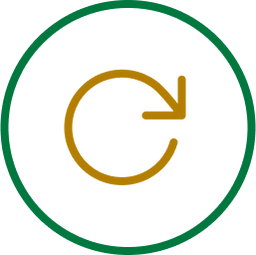CBD became an instant favorite within wellness communities and athletic communities for the health benefits it imparts.
People claim to experience a broader feeling of overall homeostasis when they use CBD. They’re a little more relaxed, a little less tense, and they enjoy better sleep. But how does CBD impart these effects?
Some people are hesitant to use CBD because they’re concerned they might feel intoxicating effects. On the surface, this is a logical concern. CBD comes from hemp, hemp is a type of cannabis, and cannabis is a psychoactive substance.
CBD doesn’t impart any psychoactive effects like most cannabinoids and other compounds found in the cannabis Sativa plant.
What is CBD?
CBD is an abbreviation of cannabidiol. Cannabidiol is a cannabinoid that naturally occurs in all cannabis or marijuana plants. Plants that were specifically grown to contain higher amounts of cannabidiol are typically referred to as hemp plants. Hemp plants contain high amounts of CBD and only trace amounts of THC, with the US Farm Bill limiting hemp plants to 0.3% THC by their dry weight.
Growers who produce hemp for CBD products will grow specific strains of hemp known to produce substantial amounts of CBD. The extract from these plants is used to make CBD oil products, like tinctures and soft gel capsules.
What is THC?
THC, or tetrahydrocannabinol, is a cannabinoid produced by the cannabis plant. There are several variants of THC. Most people are referring to delta 9 THC when they speak about THC, although delta 8 THC produces similar effects.
Non-hemp cannabis plants can contain substantial amounts of THC, sometimes surpassing 30% by dry weight.
These plants have psychoactive properties. THC is a highly regulated cannabinoid that has been illegal for most of history. In modern times, plants containing THC are recreationally legal in several states and medically legal in most states with healthcare providers’ approval.
The Difference Between CBD and THC
CBD and THC work on your brain and body differently. Your endocannabinoid system, the series of receptors that interact with cannabinoids, is vast and wide. The cannabinoid receptors are spread all throughout your body. They travel from your brain down to your digestive system.
Each cannabinoid behaves a little differently when it comes into contact with these receptors. CBD is especially playful. It wants to interact with as many receptors as it can find.
Not all of these receptors are specifically endocannabinoid receptors. It floats by and provokes these receptors. It isn’t interested in binding itself to them - it’s more interested in provoking them.
The receptors respond in various ways, as each receptor relates to a different function within a different system of the body. Many people feel that CBD works to improve their mood while relieving tension throughout their body.
Athletes find that CBD can help to promote smooth muscle recovery. People who use CBD before yoga, meditation, or other acts of mindful self-care find that CBD encourages relaxation and a calm headspace ideal for making the most of their leisurely activities.
THC is different. When it finds a cannabinoid receptor, THC binds to it. It clings on, changing the way the receptor sends and receives messages throughout the body. This is what ultimately creates the “high” effect.
For medical cannabis users, this isn’t necessarily a high. It’s a medical tool that changes their perception of discomfort, makes it easier to combat insomnia, improves appetite, eases nausea and swelling, and eases symptoms of depression. For recreational users and wellness-focused users, THC doesn’t have symptoms to contend with. It will simply produce side effects like euphoria, sleepiness, impairment, and occasional dizziness and dry mouth in high doses.
CBD Won’t Get You High
CBD doesn’t bind to your receptors. Rather than latching onto your receptors and modifying the way they receive messages, it simply inspires them to perform their native functions. It passes through, does its job, and bids your body farewell.
CBD’s gentle approach is precisely the reason why it’s so popular among people looking to support their wellness. Large doses of CBD can be used without worrying about incapacitation. They’ll get the benefits of cannabinoids without many of the undesirable side effects that may impede their ability to go about their days.
Here’s What CBD Can Do
CBD’s only medically recognized purpose is its ability to reduce the prevalence and severity of seizures in people who live with rare seizure disorders, like epilepsy.
The FDA approved CBD under the brand name Epidiolex for patients as young as two years of age. People with seizure disorders can get a prescription for CBD from their care providers.
CBD is currently being studied for its potential benefits as a workout recovery supplement and as a tool for temporarily managing symptoms. Studies are very promising and usually demonstrate clinically significant results in favor of CBD, but the FDA has not recognized CBD for these purposes.
CBD Needs a Little Help Sometimes
While CBD can provide a boost to your wellness in a broad sense, it isn’t a targeted solution that relieves immediate concerns.
In order to experience meaningful and sustainable benefits from CBD, it needs to be used consistently for a month or more. A few drops of isolated CBD won’t instantaneously improve workout recovery or ease the aches associated with joint disease.
CBD gummies, vape pens, and edibles will support your long-term wellness goals, but outside of improving your mood, you’re unlikely to experience immediate benefits when you need them most.
Over time, it might support the body’s natural processes that promote recovery and provide temporary relief, but it doesn’t quite “kick in.” It just makes your body more efficient. You’ll still experience related aches in the meantime.
For optimal recovery, use CBD in conjunction with a fast-acting targeted solution for issues like sore muscles, muscle spasms, or joint aches.
Finding Immediate Relief with Hempvana
Hempvana Arthritis Pain Relief Gel works to help support temporary relief when CBD can’t.
Hempvana uses cooling menthol, moisturizing hemp seed oil, and joint supplements glucosamine and chondroitin in our Arthritis Pain Relief Gel.
Menthol activates the same receptors in the skin that respond to cold temperatures, soothing the sensation of joint pain. Glucosamine and chondroitin are supplements commonly used to preserve the health of joint tissue.
Hemp seed oil doesn’t contain any CBD, but it does contain beneficial fatty acids that promote skin health.
Hemp seed oil helps to draw moisture to the skin and fortify the skin’s protective barrier. It helps the active ingredients in the Arthritis Relief Gel to penetrate the skin and provide better relief while leaving your skin softer and smoother after application.
Take your CBD every day, and use Hempvana Arthritis Pain Relief Gel whenever you need it.
Sources:
Hemp Production and the 2018 Farm Bill - 07/25/2019 | FDA
Extraction Explained: What Happens to In-Process Hemp Products? | Global Hemp Association
Cannabinoids and Pain: New Insights From Old Molecules | Frontiers in Pharmacology
Cannabidiol as a Potential Treatment for Anxiety Disorders | National Institutes of Health










